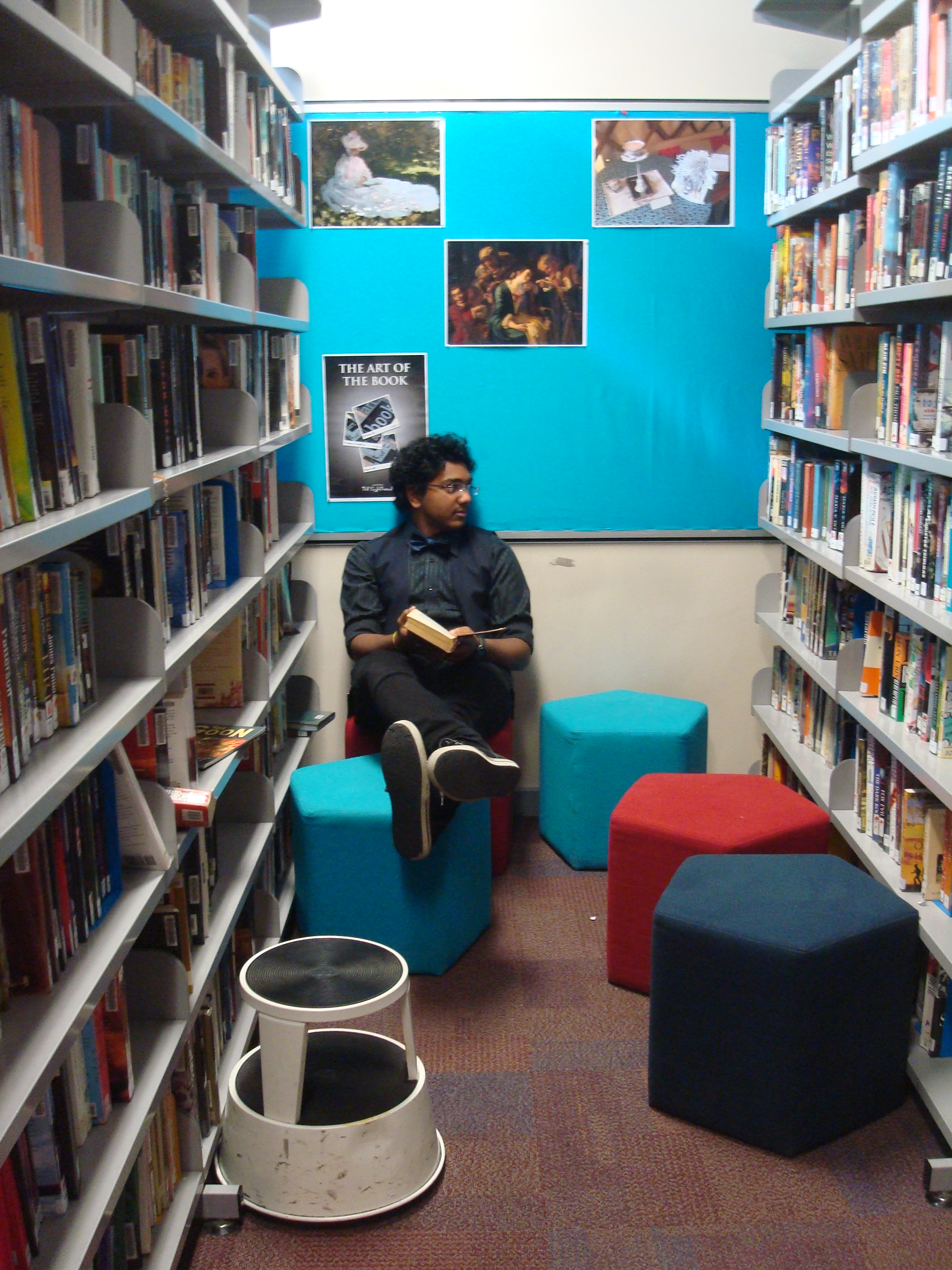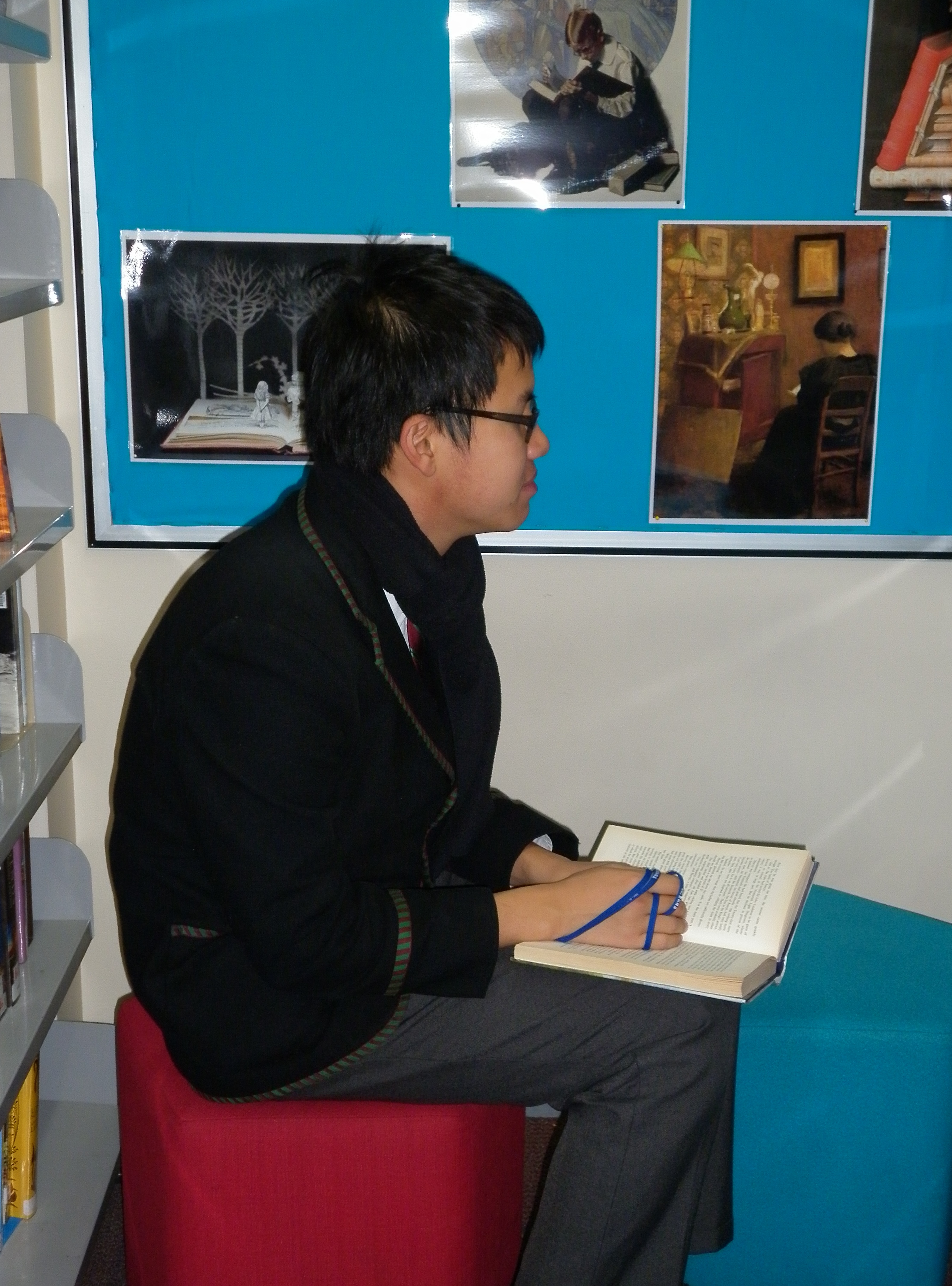This has been reposted from the Melbourne High School Library blog.
Sai Pannaganti is our 5th NYOR Ambassador 2012.
What are you reading at the moment?
I’ve started The Hunger Games – I’ve read the first one & the third one [Mockingjay] & I’m reading the second one at the moment [Catching Fire] – it’s not really confusing reading them this way, it makes sense – for me. The first one was really involving & engaging; the third one is better, but darker. I’ve also started reading Shiver [Maggie Stiefvater], it’s about vampires & a bit chick lit, but I like it.
What was you first reading memory?
It would probably be reading TinTin & Asterix – I read them all. They’re really funny – I didn’t actually pick up on all the puns in Asterix at the time, but I looked through them again when I was older – all the way through, they’re all puns. They’re so good. I also read Star Wars books & Aussie Bite stuff, too. I remember in kindergarten correcting the teacher for skipping out parts of the stories that were being read to us – that really annoyed me.
Where’s the most unusual place that you’ve ever read a book?
That would probably be while walking – in Year 3 I got into trouble from my parents & teachers because I was walking upstairs reading – I literally was reading while I walked everywhere. I never fell or tripped – you get used to it.
What book / story has made a lasting impression upon you?
The story that has made a really great impression on me because I didn’t like the character was probably Perfume [Patrick Suskind] – it was horrible & I couldn’t get it out of my head. He was a totally psychotic character & his actions were disgusting. I don’t really want to remember it but can’t help it.
There are a few books that I remember in a positive way – Harry Potter, for example, & The Hunger Games will stay with me because it’s so realistic – the third one in particular – and I can really empathize with the characters, especially the main character even though I found her really annoying at the same time. I felt the same with His Dark Materials [Philip Pullman] – I felt a great deal of empathy with the characters & felt quite depressed at the end.
Thanks, Sai, for sharing your reading background with us, and to Denise for the interview and photo.








